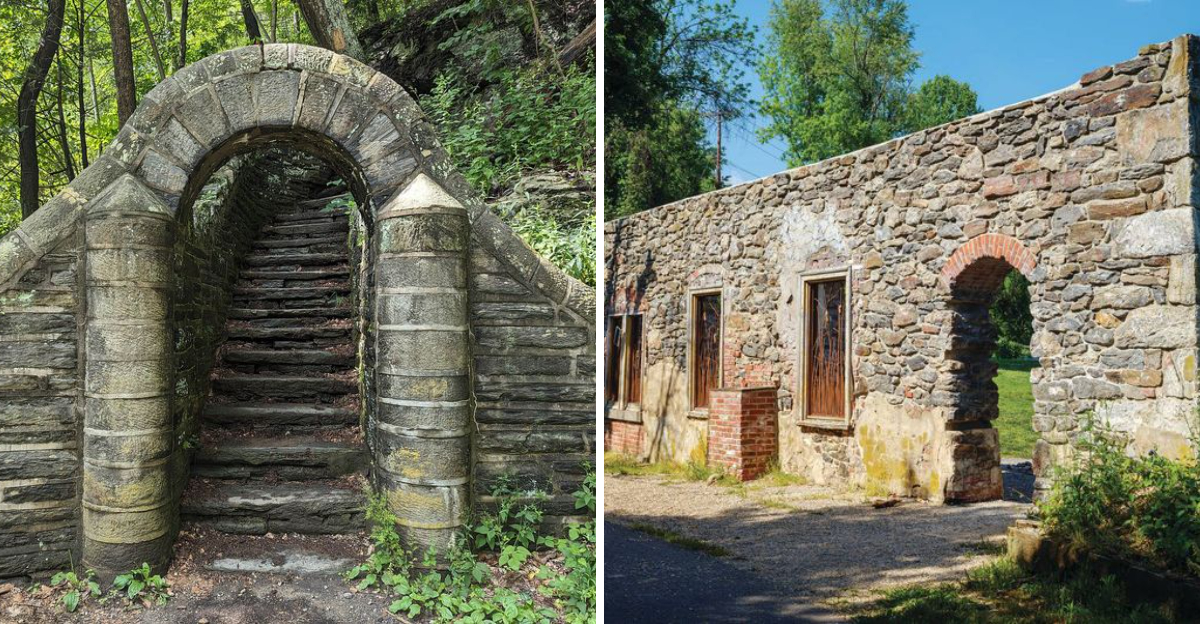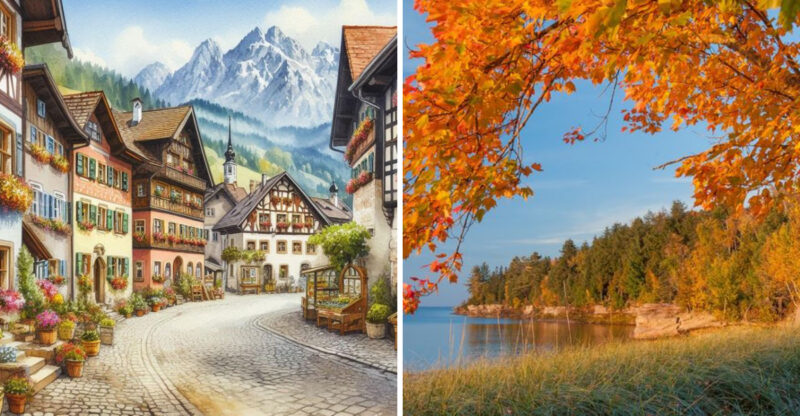12 Pennsylvania Stone Walls That Outlast Every Trend

Pennsylvania’s countryside is dotted with stone walls that have stood the test of time. These rugged structures, built by early settlers using local materials, represent both practicality and artistry.
From farm boundaries to historic landmarks, these stone walls tell stories of our past while continuing to enhance our landscape today.
1. Valley Forge’s Revolutionary Remnants
Soldiers’ hands stacked these weathered fieldstones during the harsh winter of 1777-1778. The walls outline former encampment boundaries where Washington’s army endured brutal conditions.
Today, these silent sentinels stand as testaments to American perseverance. Visitors often trace their fingers along the rough surfaces, connecting physically with our nation’s founding struggle.
2. Kennett Square’s Mushroom Farm Borders
Fungus and fieldstone create an unlikely partnership in Chester County. Local mushroom farmers built these distinctive walls using stones cleared from cultivation fields, creating natural boundaries that breathe with the seasons.
Moss-covered in damp weather, these walls provide perfect microclimates for wild mushrooms. The stones’ porous nature mirrors the growing environment that made this region America’s mushroom capital.
3. Gettysburg’s Witness Walls
Blood once soaked the ground beside these infamous stone rows. Union soldiers used these walls as defensive positions during the pivotal Civil War battle, with bullet marks still visible in some sections.
The low-slung walls at Devil’s Den provided crucial cover during fierce fighting. Park rangers point out how these ordinary farm boundaries became extraordinary tactical features that helped shape American history.
4. Lancaster County’s Amish Craftsmanship
No mortar binds these meticulously balanced stones. Amish craftsmen continue centuries-old dry-stacking techniques, fitting irregularly shaped fieldstones together like puzzle pieces without modern adhesives.
Farm boundaries created this way last generations with minimal maintenance. The walls’ gentle curves follow natural contours of the land, demonstrating the Amish philosophy of working with nature rather than imposing upon it.
5. Brandywine Valley’s Colonial Boundaries
Wealthy landowners showcased their prosperity through these elaborate stone barriers. Unlike utilitarian farm walls, these decorative structures feature carefully shaped stones and distinctive patterns.
The region’s finest examples incorporate local marble and limestone. Originally status symbols for du Pont family estates and other prominent properties, these walls now define the valley’s distinctive character for visitors exploring its historic gardens and museums.
6. Hawk Mountain’s Rustic Pathways
Birdwatchers follow stone-lined trails to prime raptor viewing spots. Conservation volunteers constructed these rugged walls using native stone collected during trail-building efforts in the 1930s.
Beyond marking paths, these structures prevent erosion on steep slopes. The rough-hewn walls blend perfectly with the sanctuary’s wild character while protecting the delicate mountain ecosystem that attracts thousands of migrating hawks each fall.
7. Ridley Creek’s Manor House Enclosures
Colonial elegance meets natural beauty in these formal garden walls. The stonework surrounding the 1789 mansion features precise jointing and decorative elements rarely seen in rural Pennsylvania structures.
Park visitors admire how the walls frame garden rooms and create outdoor living spaces. The honey-colored local stone takes on a golden glow at sunset, explaining why this state park remains a favorite wedding venue despite its centuries-old construction.
8. Allegheny Plateau’s Frost-Heaved Marvels
Winter’s freezing grip tests these northern Pennsylvania boundaries annually. Farmers in Potter and McKean counties developed unique building techniques to accommodate ground movement during harsh freeze-thaw cycles.
Wider at the base with flexible foundations, these walls shift slightly without collapsing. Local stone gatherers still seek the distinctive blue-gray sandstone that gives these structures their remarkable resilience against mountain winters that would destroy conventional masonry.
9. Bucks County’s Covered Bridge Companions
Red covered bridges get all the attention, but stone abutments do the heavy lifting. These massive foundations, often overlooked by photographers, support iconic wooden spans across creeks and rivers throughout the county.
Master stonemasons carefully selected large foundation stones for strength. The walls’ slightly angled design directs water pressure away from bridge structures during floods, explaining why many have survived over 150 years of Pennsylvania’s notorious flash flooding.
10. Wissahickon Valley’s Forbidden Drive Borders
Philadelphia’s urban wilderness features miles of creek-side stone walls. Built during the Depression as WPA projects, these structures combine flood control with aesthetic beauty along the popular car-free trail.
Schist, a local metamorphic rock, gives the walls their distinctive sparkle. Hikers and cyclists appreciate how these walls retain the steep valley sides while preserving the gorge’s wild character despite being within city limits.
11. Lehigh Valley’s Industrial Remnants
Abandoned iron furnaces stand surrounded by massive stone foundations. These walls, blackened by centuries of smelting operations, represent Pennsylvania’s industrial revolution heritage.
Engineers designed these structures to withstand extreme heat and heavy machinery. The walls’ extraordinary thickness, often exceeding four feet, demonstrates the scale of early American manufacturing ambition that transformed the state from agricultural backwater to industrial powerhouse.
12. Ohiopyle’s Whitewater-Washed Foundations
Rushing river waters test these stones with relentless force. Originally built to support mill operations harnessing the Youghiogheny River’s power, these walls have withstood countless floods and ice jams.
Kayakers navigate past these historic structures during spring high water. The walls’ rounded river stones, placed by hand in the 1800s, have been naturally polished by water action, creating an unintentional artwork that changes color as water levels rise and fall.






